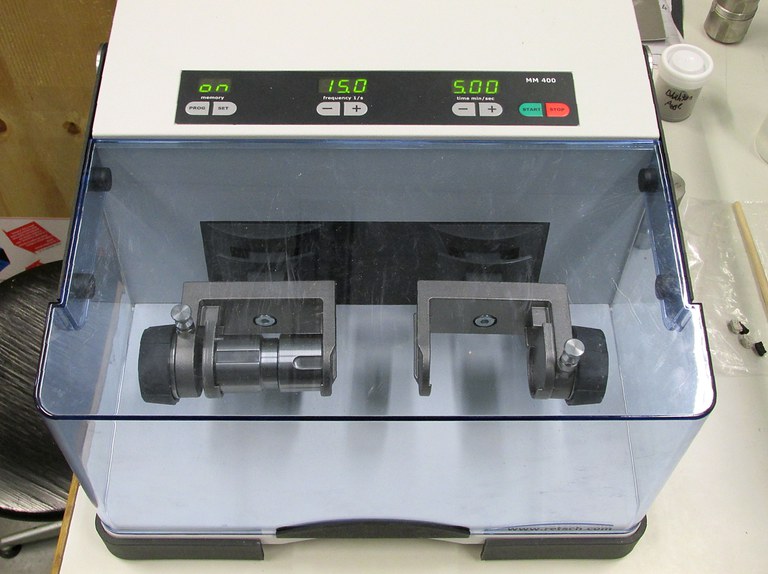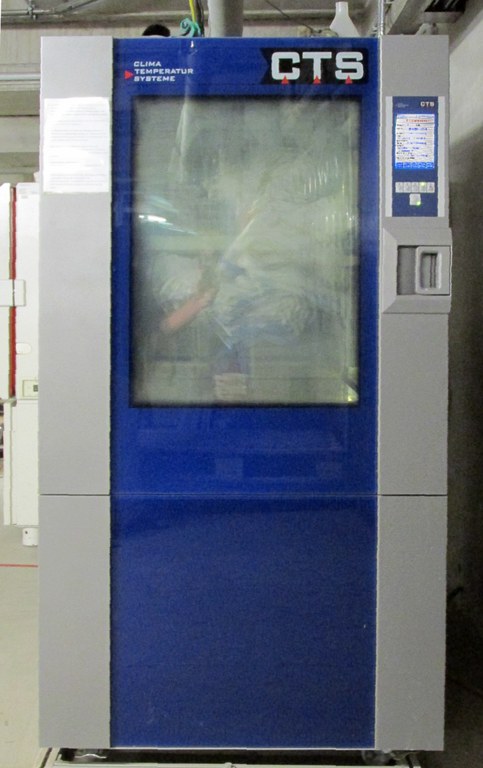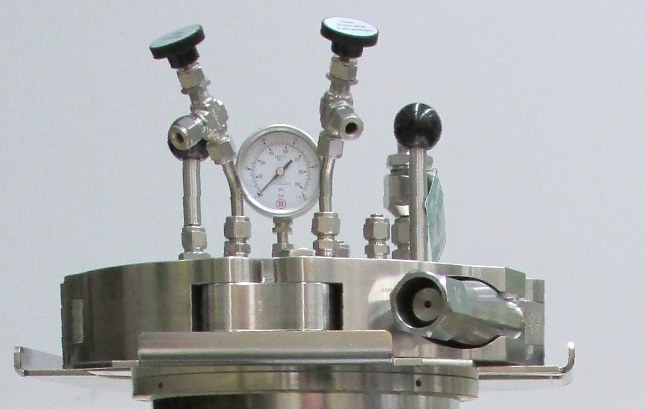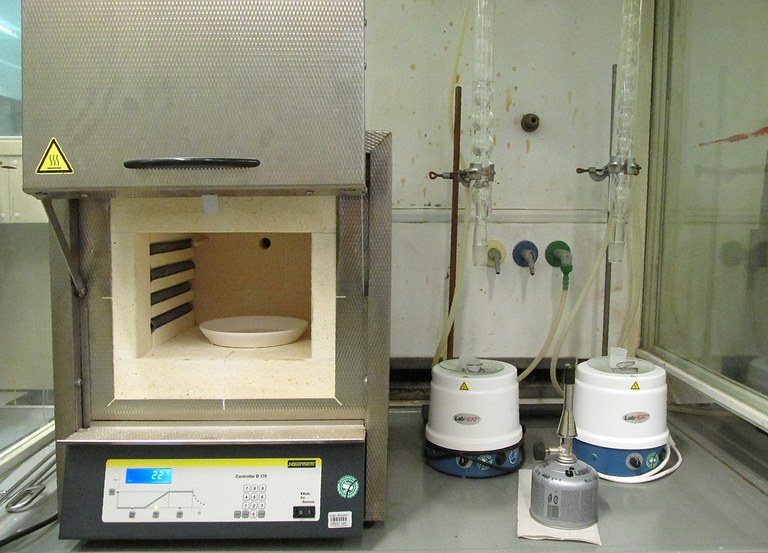Specimen producton and preparation
The laboratory runs compulsory mixers of different capacity for producing concrete specimens and has the necessary equipment for fresh concrete tests according to EN 12350. The laboratory is used in the course of the education for practical student courses, by students during their theses and for research and industrial projects.
Concrete and mortar mixers
Always the right mixer for each purpose
Different mixer types and sizes are available in the laboratory for the various applications. Very light lightweight concrete with its soft consistency must treated differently than high strength concrete containing crushed coarse aggregate.
Small mixers are best suited for initial evaluation batches and practical student courses, while research projects require often more specimens and thus demand a larger concrete volume. Compulsory mixers are available for fresh concrete volumina ranging from 35 l to 100 l. Additionally we have a bucket mixer for smallest samples and for onsite mixes if the refill of drilled cores is requested.
Mixer for lightweight concrete
Our UEZ-mixers are best suited for lightweight concrete. Their mixing paddles are especially equipped with plastic sheets which minimizes the crushing of lightweight aggregate during mixing. Only due to this measure the demanding very light lightweight concretes can be produced in a reproducible manner.
Standard concrete mixers
Two Zyklos mixers are at hand as very robust working devices. These mixers can be filled very easily and can be found in almost any concrete lab. They are suitable for almost any normal concrete.
Mortar mixers
The laboratory for mortar and binders is equipped with up to date mortar und paste mixers.
Drilling, grinding, cutting
Drill cores
After casting test specimens must be prepared such that they are ready for later testing. Specimen can be obtained as drill cores taken from existing buildings shotcrete boxes for quality control measures. Very small scale cores are used for computed tomographic investigations.
Cutting
Drilled cores are shortened to a suitable length for mechanical testing. Prismatic or cubic specimens are cut out of autoclaved aerated concrete blocks or out of no-fines lightweight aggregate concrete elements.
Grinding and Aligning
A plane-parallel end surfaces of specimens is essential for subsequent mchnaical tests. This procedure is necessary also for example for microscopy samples. Concrete specimens impregnated with green resin are polished for a better micro crack detection.
Using a quick-hardening capping compound is an alternative alignment method for specimens like cylinders, cores or bricks. Hard gypsum plaster or sulfur are suitable capping compounds.
Preprocessing and conditioning
Crushing and Grinding
Depending on the type of tests it is sometime necessary to reduce the size of the sample. A jaw crusher, various grinding mills and mortar grinder are available in the lab.

Figure: Mixer mill MM 400 for dry, wet and cryogenic grinding of small amounts of sample down to a final particle size of 5 µm
Conditioning
Test must be conducted under controlled and reproducible conditions according to the relevant testing standard. A climate room and various climate chambers are available. Additionally several drying chambers are at hand and are often used for determining the dry densities of lightweight concrete samples.

Figure: Climate chamber
Autoclave
An autoclave is a gas-tight lockable pressure container which is used for thermal treatment of materials under high pressure. In the case of construction materials autoclaves are used in the production process of autoclaved aerated concrete and sand-lime bricks. Controlling the autoclave process means controlling the curing these construction materials and in that course their strength properties and microstructure. The institute’s autoclave contains up to 11 liters. Its operation temperature ranges from 0 °C to 300 °C at a 24 bar maximum pressure.

Figure: Berghoff Highpreactor stainless steel high pressure laboratory reactor
Annealing and Calcining
The annealing furnaces reach 1400 °C maximum operation temperature. They are suitable for controlled calcination of smaller charges of clay and clay mixes. They are also employed for synthesizing cement clinker minerals.

Figure: Open annealing furnace